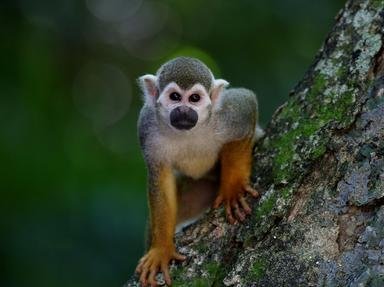Quiz Answer Key and Fun Facts
1. The most primitive primates are the Lemuriformes, which include lemurs along with what other primate?
2. The largest of lemurs is also the best-known one, the ring-tailed lemur.
3. If it falls to the ground, the tarsier finds it nearly impossible to do what?
4. Which of these is a New World monkey, and thus small and arboreal?
5. The northernmost ranging Old World monkeys are famous for bathing in the hot springs of which nation?
6. Gibbons are among the few primates that can famously swing through trees in a motion known as what?
7. The most commonly accepted explanation for an orangutan red coloration is what?
8. The proverbial 800 lb gorilla sits anywhere it wants to. Can a real gorilla reach 800 lb (360 kg)?
9. Which of these primates is a great ape, and in fact a type of chimpanzee?
10. More obvious things aside, humans have fewer what than the rest of the great apes?
Source: Author
nautilator
This quiz was reviewed by FunTrivia editor
Tizzabelle before going online.
Any errors found in FunTrivia content are routinely corrected through our feedback system.

